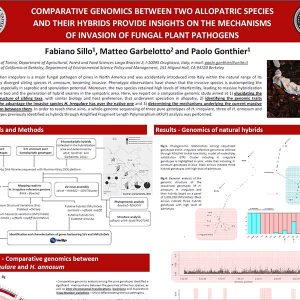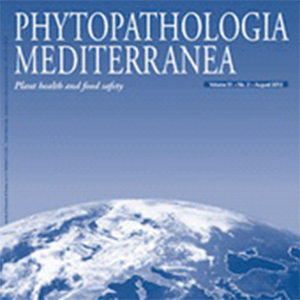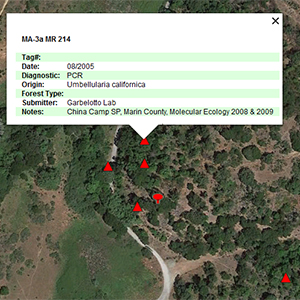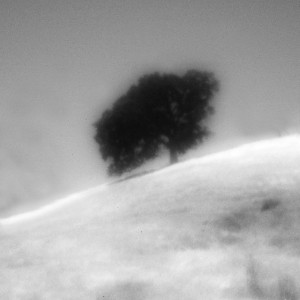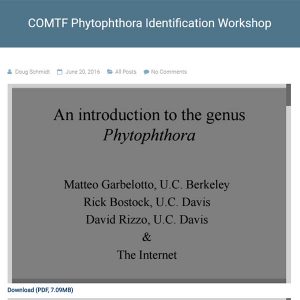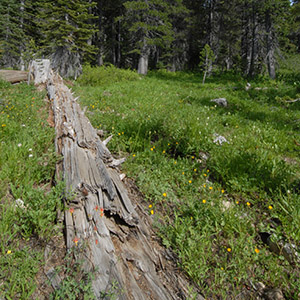How many kinds of oaks are there in California?
There are a number of common oak species in California including both tree and shrub species. See our CA Native Oaks post for detailed information.
Illustration by Michael Lee – Link to his beautiful poster of the Native Oaks of California
What’s the Gold Spotted Oak Borer?
The GSOB is a destructive insect pest that is decimating some oak species mostly in Southern California. It has been found infesting coast live oaks (Quercus agrifolia), California black oaks (Q. kelloggii) and canyon live oaks (Q. chrysolepis). It attacks the limbs of mature oak trees feeding in the conductive tissues and sapwood. Unfortunately the GSOB can be spread in cut firewood. Click here for additional information.
What can I plant under my oaks?
As a general rule, avoid planting under the canopy of oak trees. It is recommended that you remove non-native plants from under oaks but avoid disturbing the soil or drainage patterns in the process. If you need to plant something, choose species that require similar soil types and watering. Avoid azaleas and rhododendrons as they typically require more water than is appropriate for oaks and may transmit diseases such as Sudden Oak Death.
I have insect larvae in my oak acorns, what do to?
The Filbert weevil (Curculio occidentis) and Filbertworm (Curculio occidentis) are two common pests of oak acorns. The larvae of these insects live and feed in the acorn and can cause significant loses. There are currently no effective methods for control of these pests. Insect damaged acorns may also get secondary bacterial infections that cause drippy oak disease (Erwinia quercina). There are some very good guides available; the UC IPM Guide, the excellent Field Guide to Insects and Diseases of California Oaks, and UC Oak Woodland Management Guidelines.
Should I water my oak trees during the drought?
In general, healthy live oak trees are able to survive the dry seasons and extended droughts we experience in California. In most circumstances it is not necessary to water mature established live oak trees. Shallow watering can in fact cause additional problems. Over watering or improper watering of oak trees may promote the growth of bacteria that can damage the root hairs and the ability of the tree to absorb water from the soil. Deep watering of oaks may be appropriate in some circumstances, but it is advisable to consult a certified arborist regarding watering of oak trees especially mature trees.
I’m worried that my oak is drought stressed. How can I tell, and how much (if any) water should I apply?
Detailed information on “Watering Guidelines” can be found at http://cemarin.ucanr.edu/files/174267.pdf.
Are there any treatments available for an oak with Armillaria (oak root fungus)?
Once an oak has the oak root fungus Armillaria (often due to excessive watering), most treatments will be ineffective. Be sure the base of the tree is free of mulch and other organic debris and slightly expose the root system at the root collar. While fertilizing may not help, try using one bark application of Agri-Fos + PentraBark. This application provides minimum nutrients, but strengthens the defense mechanisms of the tree. Of course, stop watering unless absolutely necessary. Water should never be administered from July-September.
Bark beetles are attacking my oak. Will they kill the tree? What should I do?
Once bark beetles attack the main stem (trunk) of an oak, the tree is on its way out. Insecticide treatments will not save it. Oak beetles are attracted to trees that are severely compromised. They cannot attack healthy trees.
The correct approach to avoid bark beetle infestations is not to apply insecticides, but rather to identify any health issues a tree may have. As of October 2015, many trees are suffering from the prolonged drought and may need watering. Watering should be applied infrequently and never during the summer. Water-starved trees may display a thinner crown, with olive-green rather than dark-green leaves. Leaves may also be crisp when folded between your fingers. If you opt to provide water to an oak tree that is severely water deprived, make sure the water reaches a depth of about one foot below the soil surface. Also make sure the flow is low to avoid flooding the base of the tree.
Is it okay to prune coast live oaks in the winter if there is no SOD inoculum in the area? Are there other pests that are active in the winter that are of concern?
Although there may be few insects flying in the winter, the wet winter season (actually fall through spring) is a prime time for production of fruiting bodies by many wood decay fungi. The combination of fresh pruning wounds (especially large wounds), high spore densities of wood decay fungi, and moist conditions (favoring spore germination) can favor new infections by these fungi. From the standpoint of reducing risk of infection by wood decay fungi, pruning in late spring or early summer is probably preferable.
In general, pruning live branches from mature oaks should be kept to a minimum. However, if it is necessary to prune coast live oak branches, as long as they are less than 4″ in diameter, the presence of SOD is not a concern. Though, it is important to prune the oak correctly.
• Make sure you prune right where the tapering of the branch ends from the main stem or even slightly closer to the stem (1/2 in. from the end of the tapering towards the stem).
• Make sure the cut is clean and allows for water to drip without accumulating.
Can coast live oak be used in a large-scale Bay Area tree planting project without exacerbating SOD?
Question:
My organization is considering launching a large-scale urban tree planting project in the Bay Area, with the goal of adding one million trees to the urban forest inventory within 15 years. We are interested in coast live oak (CLO) as a major component of the effort for a number of reasons, including the ease with which seed can be collected and planted, drought tolerance, habitat value, high potential for carbon sequestration and rainfall interception, and status as a “signature tree” of the local landscape.
The plan is to gather seed locally from many locations, and plant with minimal site preparation and no supplemental irrigation or other artificial life support systems. Trees will be monitored and cared for over time, and replanting will take place as needed to ensure that we continue to make progress toward our goal. Obviously we don’t want to exacerbate the sudden oak death problem. Our hope is that, on the contrary, widespread and large-scale planting with subsequent monitoring might help identify resistant trees. What recommendations do you have?
Answer:
First of all, this is a really neat project and you are absolutely correct about the benefits of planting CLO. Based on the information provided, the following are recommendations for the project:
In addition to coast live oak, it would also be good to plant Oregon white oak in the northern greater Bay Area, valley oak in the middle portion of the Bay Area, and blue oak in the southern part of the Bay Area. The rationale for this is that diversity/biodiversity is always good and the three alternate oak species are immune to SOD. A good overall planting ratio would be 75% CLO and 25% other species.
The big issue is going to be when California bay laurel is present, as it helps to spread Phytophthora ramorum. CLO should never be planted within 20-25 yards of bay for this reason. Unfortunately, bay has become invasive and SOD is actually increasing its abundance, so where bay is at least 10% of the stand, plant the other oak species recommended above. In riparian areas, bay should be left untouched.
My coast live oak trunk is oozing. I sprayed the bark in January. Can you estimate how long it will be before the tree fails and we have to remove it?
The symptoms on your oak may be caused by a range of issues. If oozing is accompanied by the presence of fine sawdust, then the tree is dying. Even if it is still green you may want to consider removing it if its failure may cause harm to people or property. The fine sawdust is caused by beetles tunneling in the tree. Oaks are only attacked by beetles when dying. If no sawdust is present, then the tree’s condition may be reversible.
Unfortunately, it is difficult to determine what may be the cause of the symptoms you describe. Sudden Oak Death (SOD) can attack an oak tree if California bay laurel is within 60 feet of the oak. You can use the free SODmap Mobile App to determine if you are in a high or moderate risk zone for SOD. To find out how to do that, go to www.sodmapmobile.org. There is also a YouTube video you can watch at https://youtu.be/zE0_q3EmIfs. If the information you gather suggests that it may be SOD, then repeat the phosphite bark application (such as Agri-Fos® combined with Pentra-Bark®) in the fall between October 30th and December 15th. You may also want to consider removal of bays within 30 feet from the oak. Go to http://nature.berkeley.edu/matteolab/?page_id=909 to find out about upcoming treatment training sessions to learn more about treatment options. If there are no bays within 60 feet of your oak and the SODmap mobile risk is low, then it likely isn’t SOD.
If you have watered your oak, it may be a root disease such as the oak root fungus or Phytophthora cinnamomi root disease. Make sure you stop watering and expose the upper root system to the air to slow disease progression. If you have never watered your oak, then it may be a secondary disease brought on by the long drought (ex. oak die-back fungus). These are diseases that are strongly affected by the genetics of the tree and weather conditions. In this case, you may want to try watering the tree now and then once again in 2 weeks. Then water once a month starting October 15th. Do not water between July 10th and October 15th. Watering should be done using a low flow approach to ensure that the soil gets wet up to 1 foot down and that no flooding of the tree ever occurs. Unfortunately, if the secondary disease is too advanced, despite all efforts, the tree may still die.
Can I apply phosphonate to my oak trees to help prevent SOD or do I need a professional?
Yes, you can apply phosphonate to your oak trees to help protect them from sudden oak death. You can find it in many Bay Area garden supply stores.
If you apply it topically to the bark, you will also need the surfactant Pentra-Bark® and you will need a sprayer. If you choose to inject it, you will need enough injectors to treat your largest tree (1 injector every 6 inches around the circumference). Treatments should be applied between November 1st and December 15th for best results.
For details on how to apply phosphonates, go to www.matteolab.org, “Treatment and Diagnosis” (at top of page).
I have an oak in the Bay Area that is oozing liquid from the trunk base. Should I test it for SOD? If so, how?
When trying to determine if an oak may have SOD (caused by the plant pathogen Phytophthora ramorum), the first step is to determine if the tree lies within 1 km of a known outbreak. This can be done by accessing SODMAP at www.sodmap.org or by uploading the free “SODMAP Mobile” app to your smartphone. Stand next to the tree in question and tap the risk button. A response of moderate or high risk would suggest Phytophthora ramorum may be present. The next step is to confirm it is indeed P. ramorum. Make sure the oozing is not wetwood, or bacterial flux, which typically is associated with much more oozing and often has an unpleasant odor. Bacterial flux usually has a watery secretion running down the trunk that originates from a wound or branch crotch. If all symptoms align with SOD, the next step is to test for P. ramorum. If a symptomatic California bay laurel tree is within 10 m of the oak, collect symptomatic bay leaves for testing. This is not a definite diagnosis for the oak, but it may be an acceptable one that does not involve wounding the oak tree for sampling. Bay-based diagnosis for an oak may be less accurate after multiple years of drought, as bays may actually turn from SOD positive to SOD negative during extended dry conditions. One can get bay leaves tested by participating in one of the annual SOD blitzes (www.sodblitz.org) or by submitting samples to the California Department of Food and Agriculture. Testing the oak requires debarking a portion of the tree until the margins of the putative SOD lesion under the bark are visible and then plating the margins of the lesion on Phytophthora-selective medium for laboratory analysis.
Does rain affect preventative phosphite (e.g. Agri-Fos®) treatments for oaks?
When treating oak trees with phosphites to help prevent SOD, it may be beneficial to apply the topical treatment to bark that is dry. Rain occurring after the treatment (even immediately after) does not affect the application. If injecting phosphites, it may be better to avoid rainy days, as lower evapotranspiration is often documented for trees in such conditions. Lower evapotranspiration rates may result in poor tree absorption of phosphites.
Note: Topical treatments are most effective when applied in the fall, from November to early December. Injections should only be performed from fall to early winter.
How do I determine the distance from trees on my property to P. ramorum-positive trees on SODmap?
When looking at SODmap, you may wonder if P. ramorum-positive trees are close enough to pose a threat to trees on your property. Use the free App SODmap mobile to get the answer. Just tap the App risk function and it will tell you whether infected trees trees are within 200 m (high risk) or 1,000 m (moderate risk). If infected trees are further than 1,000 m, risk is typically low. Alternatively, you can use Google Earth, tapping the icon with a “ruler” on the top bar. Click your mouse on the closest infected tree and then move the mouse to your property. Be careful to actually move the mouse all the way to an oak tree within your property. The mouse should be drawing a line when you go from the infected tree to your oak. When you click the mouse again on top of the oak on your property, the ruler will tell you the distance. The following is suggested:
- As the crow flies, measure from any infected tree to any oak of interest.
- Repeat the measurement process using 3 different infected trees that appear to be close to your property.
- If distance is slightly higher than 200 m (high risk) or 1,000 m (moderate risk), but your property is downhill and/or downwind, you may still consider your oaks to be at risk.







